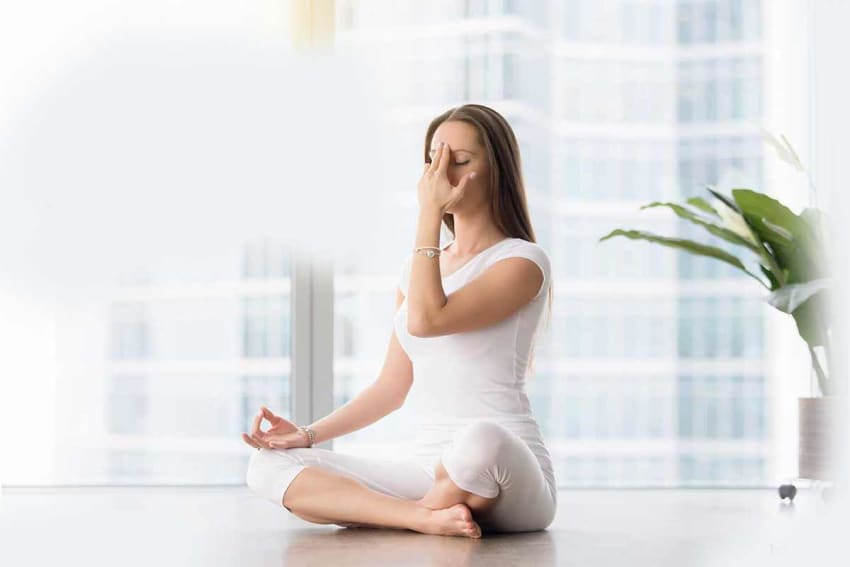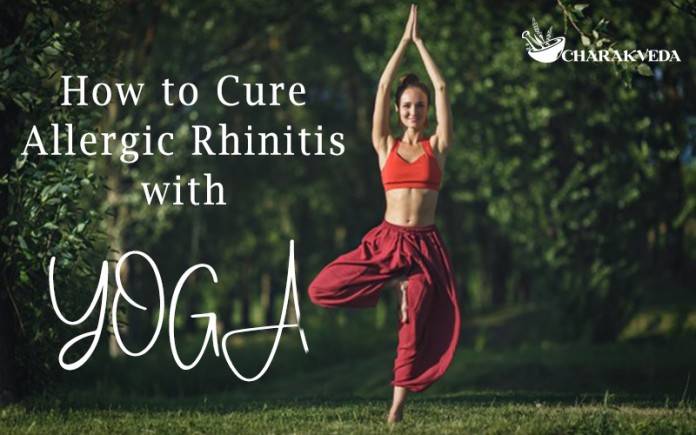Allergic Rhinitis or medically termed as Hay Fever is a common allergic condition. It is the body’s defence mechanism when it comes in contact with foreign elements or is introduced to a new environment and atmosphere. As seasons change, a lot of people fall prey to a lot of allergic reactions. You can be allergic to pollen, latex from blooms or fruits, budding trees, direct sunlight, dust, dirt and many other things. The human body tries to protect itself when it comes in contact with such allergic elements and thus produces histamines. Allergic rhinitis is also caused by unhealthy food habits, stress and environmental factors like pollution. In such times looking up to yoga for allergies is one of the healthy options. There is also dust allergy treatment in Ayurveda which is effective and helpful.
What are some of the symptoms of Allergic Rhinitis?
- Inflammation of the nasal passage.
- Sensitivity or reddening of eyes.
- Swelling and watery nose.
- Headaches.
- Sore throat and dark circles.
- Sneezing and coughing.
- Skin blisters.
- Tiredness.
How Yoga can help with Allergic Rhinitis?

Yoga is an everlasting remedy and greatly aids your body when dealing with allergic reactions. Some of the yoga poses that help with the symptoms of hay fever are:
- Tree pose or Vrikshasana
Stand on your mat and raise both your hands and bring it to your chest and join them in prayer position. Keeping your palms joined raise your arms upwards towards the ceiling. Then focusing on your lower body, bend your right knee and position the sole of your right foot on the inside of your left thigh. Then keeping your left leg straight hold this position as long as you want. Relax for a minute and repeat on the other side and repeat 5-8 times. - Shoulder-Stand pose or Salamba Sarvangasana
Lie straight on the yoga mat with your arms on your sides. Move your legs up in the air so that your legs and hips are up in the air and while in this position support your waist with your hands and elbows acting as your anchor on the floor. Make yourself comfortable in this position by holding up your body and keeping your spine straight. Stay in this pose for 30-40 seconds and try to breathe normally. Bring down your legs very slowly and rest in the Shavasana and repeat 2-3 times. Also called as the ‘Mother of all Poses’ and practicing yoga for allergies is a wise step to choose. - Warrior pose or Veerabhadrasana
Stand straight and look forward. Move your feet forward about 4 inches and twist your left foot 90 degrees outwards and right foot outwards about 15 degrees. Then move your arms sideways and level it with your shoulders. Breathe out and bend your left knee and turn your head and turn left. Breathe and stretch your hands apart and then slowly push your pelvis down and hold this position. Repeat the pose on the other side and do it 3-4 times more. - Plow pose or Halasana
Lie down on your back and lift your legs above the stomach. Then bend your body and stretch your legs over your head so that your toes touch the ground above your head. Try to hold this posture for 15-20 seconds and slowly release your legs and rest for a minute before starting again. - Fish pose or Matsya Asana
Lie down and double your arms under your body. Then raise your head and chest only and breathe in and then rest the top of your head on the ground so that your body makes an arch with the ground. Balance your body using your elbows. Breathe in and out in this position and stay in it for as long as you can hold it. This pose is called as the ‘destroyer of all diseases’ and is one of the key elements in yoga for allergies.
How can Ayurveda help you with allergies?

Immediate treatment of hay fever is implemented using anti-histamines but there are many treatments in Ayurveda that can help you greatly in helping your body deal with allergies. Ayurveda focuses on rectifying imbalanced dosha and restoring body’s health when dealing with allergies. Dust allergy treatment in Ayurveda is caused by the vitiation of the Vata dosha in the body which can be naturally cured by following Ayurvedic treatment. Ayurveda has a number of treatment procedures that includes the following:
- Snehapana (intake of medicated ghee)
- Gandusha (holding medicated liquid in mouth)
- Dhoomapana (inhalation of medicated ghee)
- Vamana (emesis)
- Swedana (sweating)
A combination of yoga and ayurvedic treatments can be used to cure allergies. They are natural treatments and do not have any side effects and are thus gaining popularity these days. Yoga increases the immunity of the body and yoga for allergies prepares the body to prepare for foreign elements and deal with them efficiently.


